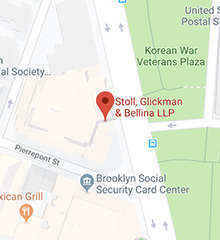Wrongful termination is a term that employment lawyers hear often from potential clients seeking to bring a lawsuit against their former employers. The abbreviated explanation I use in responding to these inquiries is to simply state, “wrongful termination doesn’t really exist,” but admittedly there is a more complicated larger picture.
Fundamentally, most private sector employment is at-will, or subject to modification or termination for any reason, absent a reason prohibited by the Constitution or by statute (discrimination, retaliation, etc.), or in the absence of a collective bargaining agreement (i.e. employment involving unions and unionized employees). Otherwise, there are only a handful of situations where a wrongful termination claim will be recognized in New York State, and those claims offer only limited protection:
First, a terminated employee can bring a wrongful termination lawsuit against their former employer if the employer’s handbook or other policy manuals say that the employee can only be discharged for cause, and if the handbook does not contain a disclaimer asserting that the at-will nature of the employee’s employment is not limited by the handbook. In the past, courts have recognized a limitation on at-will employment arising from an employee’s handbook. In Weiner v. McGraw-Hill, Inc., 57 N.Y.2d 458, 457 N.Y.S.2d 193 (1982) for instance, the Court recognized an implied-in-fact contract and allowed a claim of wrongful termination to proceed where the employment manual stated, “(t)he company will resort to dismissal for just and sufficient cause only…” and where the plaintiff employee presented evidence that he had been fired without sufficient justification.
Second, a terminated employee can bring a wrongful termination lawsuit where they previously agreed to employment for a definite duration. In other words, if your employer insists that you remain employed for a specific period of time, your employer cannot lawfully terminate your employment without just cause. However, if the employment contract does not define “just cause,” courts allow employers broad discretion in demonstrating just cause, meaning that an employer must demonstrate merely that it had “reasonable” grounds for termination and that the grounds were asserted in good faith. Still, where an employee is subject to an employment agreement for a definite duration, a fact dispute could be created merely by alleging facts demonstrating that the employer’s grounds for termination were untrue or otherwise made in bad faith. In this situation, the lawsuit would likely survive to trial.
Third, New York state trial courts have carved out an exception to the at-will principal for a very narrow subset of whistleblowers – attorneys fired as a result of having raised ethical concerns (go figure). Specifically, in Wieder v. Skala, 80 N.Y.2d 628,593 N.Y.S.2d 752 (1992), the Court enforced an implied-in-fact contract between a law firm associate and the partners in the law firm he worked for based on their common professional obligation to the Code of Professional Responsibility, which defines an attorney’s ethical obligations. The associate brought suit for retaliatory and wrongful termination and the court declined to dismiss his case, citing the ethical cannons of the profession as creating an obligation on the employer’s part to avoid retaliatory terminations.
And, well, that’s it. Those are the only exceptions to an employer’s right to fire you for whatever reason they want to. Despite this, I get calls weekly from potential clients – many of them with egregious stories of unfair treatment and unpleasant behavior in the workplace – seeking to bring a wrongful termination lawsuit, and inevitably these callers are stunned silent upon learning that they have no recourse. It’s not fair, I know. But it’s the law, so if this is you, it’s best to prepare yourself for an unsatisfying outcome and focus on securing unemployment benefits, making sure your accrued vacation days are paid out, and ensuring all of your wages, including your overtime pay, is paid to you in full.


